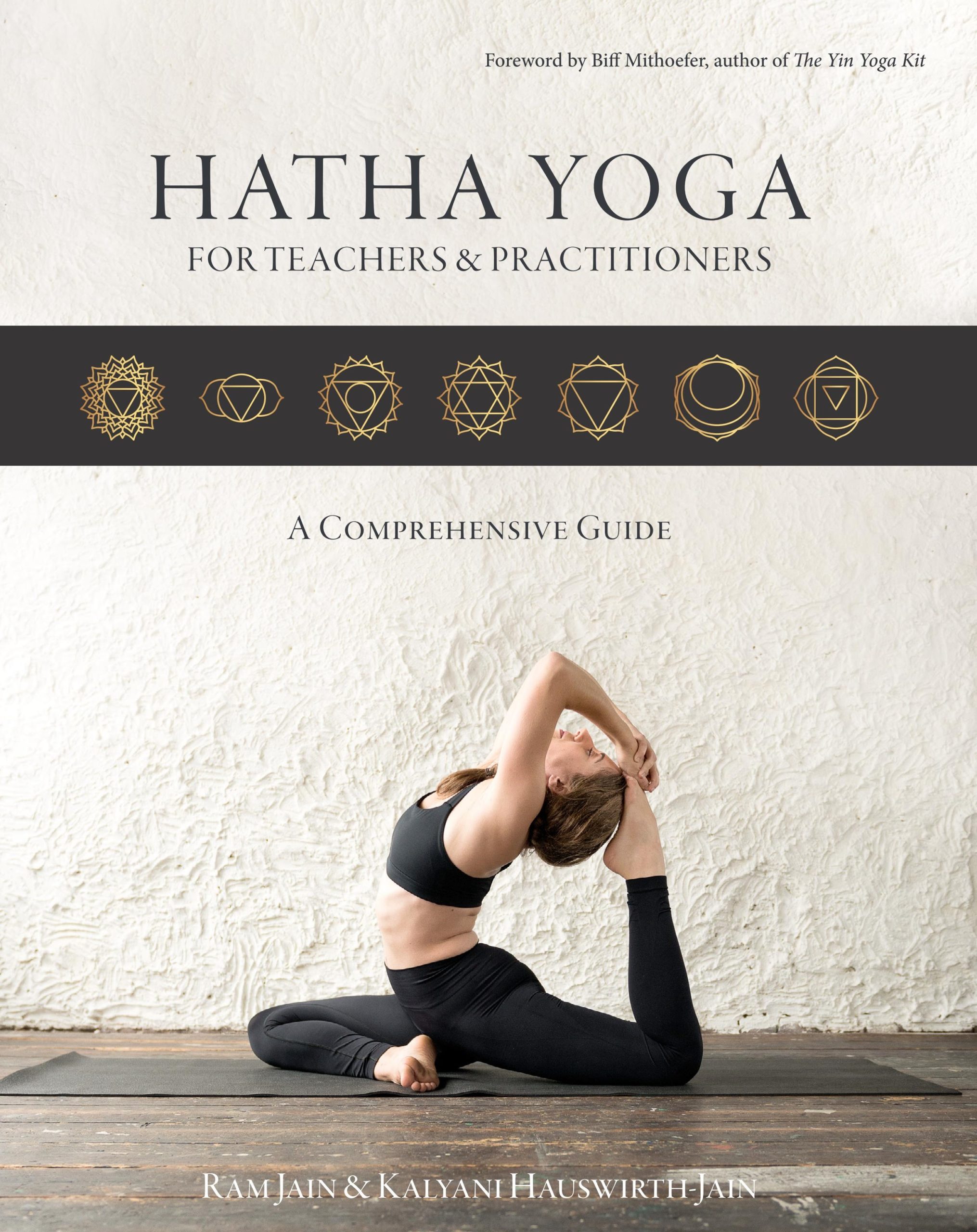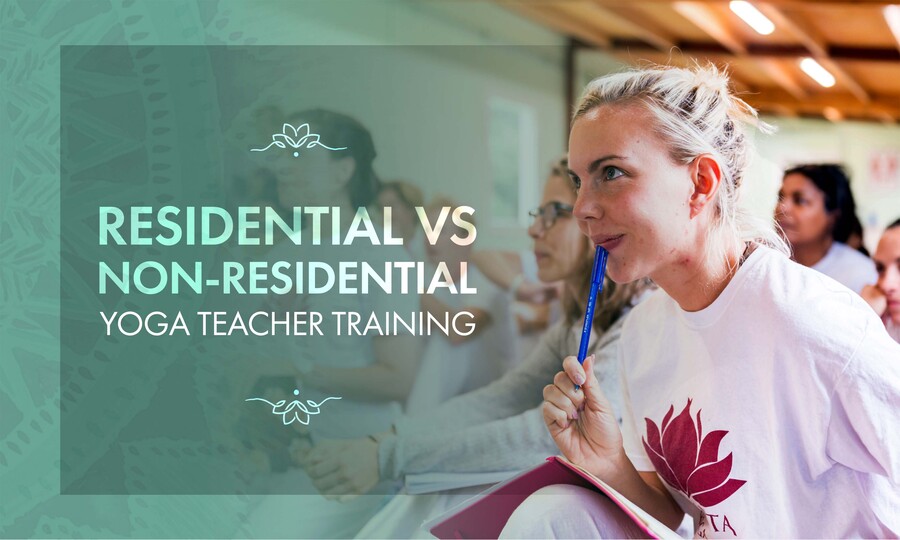There are many ways to become a yoga teacher. In this article we will try to help those of you who are doubting whether to choose a residential or a non-residential yoga teacher training.
There are many different types of yoga teacher trainings to pick from. The most common road to becoming a yoga teacher is the foundational 200 hour yoga instructor training, which sets a foundation for your teaching journey. This is also the international standard to be qualified as a yoga teacher. From this foundation, many other types of yoga teacher courses can be added to further specialize your teaching skills.
Read more: The difference between a 200, 100 and 50 hours yoga teacher training
The most obvious differences in all the yoga teacher training courses offered today, are their location and duration of their program. One of the biggest difference is whether it is a residential and non-residential yoga teacher training. A residential training is usually a one-month intensive training, including accommodation. A non-residential training is roughly the same amount of hours spread over a longer period of time.
Reasons to choose for a non-residential yoga teacher training
Finding the time to complete a training to become a yoga teacher can be quite challenging, especially when you have to combine your teacher training with other obligations in life. You might have to be home for work, for your family or other permanent responsibilities. It can also be due to specific requirements for food, environment or lifestyle. You might not feel comfortable staying with unknown people or you might be afraid of flying.
These are all legitimate reasons to chose a non-residential training close to you. This means you take some classes a week or a month and in this way you spread the hours needed over a period of time. This can be spread over a couple of months or even years. A local training will let you get to know the teachers around you, spend more time in a yoga studio and provide you with future connections for your career in teaching. The downside of a non residential training is the lack of immersion in the subject. Daily life can and will easily blur the information you receive during the training days. You will most probably get distracted with other responsibilities, making it difficult to fully absorb all the information.
Are you ready to choose a residential yoga instructor training?
If you have a month to spare for a full yogic immersion, you can follow a residential training. This is mostly suitable for people who are ready to dive into a large amount of information in a short time span. This can be challenging, both mentally and physically. But if you are willing to learn and work hard, it is more than likely that you will successfully complete the training. You need to be ready to study, practice and teach during the full time for this period. Usually a residential training takes about 4 weeks and has classes 6 days a week with one day off for study and relaxation.
Read more: 4 Reasons why it is possible to follow a yoga teacher training in 4 weeks

Get a free copy of our Amazon bestselling book directly into your inbox!
Learn how to practice, modify and sequence 250+ yoga postures according to ancient Hatha Yoga principles.
The next question you can ask yourself is what kind residential yoga teacher training you would want to experience. You could go for a complete adventure, travel to a far destination and combine a holiday with a yoga teacher training. Many retreats and hotels around the world offer yoga teacher certification courses. There training's are usually less heavy on the studying and philosophy and more about the experience. This is a good training for anyone wanting a first taste of yoga education and a nice holiday experience. The immersion is stronger than the non-residential type of training. However the holiday feeling you get in a retreat or hotel can influence the learning experience.
The more serious residential 200 hour yoga teacher training would be in an ashram. The idea behind this type of residential training goes back to the traditional way of teaching, called Gurukula. A Gurukula was a type of school system in ancient India. It can be found mentioned in the Upanishads, a part of the four Veda’s, with the earliest part dating back to the 6th century. In this system, the students would live near or with their teachers and follow the education without any other distraction. This tradition can be found in many different religious groups in India. It was also the main education system in South Asia before the British rule. The modern Gurukula system was revived by Dayananda Saraswati and Swami Shraddhanand in the 19th century, creating space for monastery retreats and training's to be revived. Students attending these spaces are considered equal, they learn from the guru and participate in every-day chores, creating a small community.
There are many ashrams around the world, each having their own philosophy and code of conduct. Some are more strict than others, but all believe in the system of complete immersion and sober living to accommodate the learning experience. A yoga teacher training in a hotel or retreat can have a similar effect, but the environment can be distracting. When you decide to go to an ashram the chances are high that you can stay committed and you will get a glimpse of an ancient way of studying.
Read more: What you need to know about a yoga ashram
In the end, with every learning experience, the process will be affected by your way of learning. Finding the right environment to develop your teaching practice is essential to create a strong foundation. Everybody has their own unique way of learning. Our experience has shown that, out of the different ways of becoming a yoga teacher, the experience in an ashram has the best effect. By limiting distractions and maintaining a yogic lifestyle for a month, you can fully immerse yourself in the experience and create healthy habits that will benefit your personal practice as well as your development as a teacher.
Do you need further help to decide about which yoga teacher training might be the best one for you? Read more: How to pick the best yoga teacher training for you?

Get a free copy of our Amazon bestselling book directly into your inbox!
Learn how to practice, modify and sequence 250+ yoga postures according to ancient Hatha Yoga principles.


